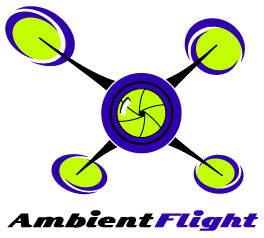

This project has been a great, but frustrating learning experience. I started off with the hopes of designing and printing my own 3D printed frame for a 5″ FPV quadcopter. I originally designed it to be a 4S setup so I could use the motors I received in my last and final FPVCrate. FPVCrate is a drone part subscription service. First problem, one of the motors turned out to be bad, and I fried two separate 4in1 ESC’s. Talk about mad!
After resolving the motor issue, I ended up switching to 6S power and discarding the 4S motors. I went with some very cheap EMAX motors I found on closeout. Had to wait for the slow boat from China, but the 9 motors eventually arrived. With motors in hand I pulled all the electronics off the 4S and installed the new motors, upgrading to 6S.
The maiden flight was interesting. It flew for about 13 seconds but something wasn’t right. When I picked up the quad the ESC and motors were so hot they were literally melting the 3D printed frame. I eventually concluded that the frame was not stable enough, causing micro-vibrations. Those vibrations caused the flight controller to try to over-compensate and nearly fried the motors.
Rooster
At that point I figured a 3D printed racing drone frame was not the way to go. So I looked around and found a cheap clone Rooster frame on Amazon for $28. It was very highly rated and for good reason. It is solid.
I had two more hurdles to jump though. During the rooster build process I found that I had one more bad motor and a defective ESC. After replacing both the motor and ESC, the bird finally flew.
I took the quad out to a park and was thrilled to find that it really ripped was very agile. But there was one problem left to solve, no on screen display (OSD). At that point I realized I’d wired the camera directly to the video transmitter.
Oops. So I had to rip the whole thing apart to rewire that part. Another park flight is coming, but now I’m fairly sure the quad is done.
Parts
WASHINGTON – The U.S. Department of Transportation’s Federal Aviation Administration (FAA) today announced the eight companies that will assist the Federal government in establishing requirements for future suppliers of Remote Identification (Remote ID). Remote ID will enable Unmanned Aircraft Systems (UAS), commonly called drones, to provide identification and location information while operating in the nation’s airspace.
The FAA selected the following companies to develop technology requirements for future Remote ID UAS Service Suppliers (USS): Airbus, AirMap, Amazon, Intel, One Sky, Skyward, T-Mobile, and Wing. These companies were selected through a Request for Information process in December 2018.
“The FAA will be able to advance the safe integration of drones into our nation’s airspace from these technology companies’ knowledge and expertise on remote identification,” said U.S. Transportation Secretary Elaine L. Chao.
This initial group will support the FAA in developing technology requirements for other companies to develop applications needed for Remote ID. The applications will provide drone identification and location information to safety and security authorities while in flight.
The technology is being developed simultaneously with the proposed Remote ID rule. Application requirements will be announced when the final rule is published. The FAA will then begin accepting applications for entities to become Remote ID suppliers. The FAA will provide updates when other entities can apply to become qualified Remote ID USS on FAA.gov.
Drones are a fast-growing segment of the transportation sector with nearly 1.5 million drones and 160,000 remote pilots now registered with the FAA. The agency’s ability to develop Remote ID technology simultaneously with the rule enables the FAA to continue to build on a UAS Traffic Management (UTM) system that has demonstrated global leadership through the small UAS rule and the implementation of the Low Altitude Authorization and Notification Capability (LAANC), which automates the application and approval process for most UAS operators to obtain airspace authorizations.